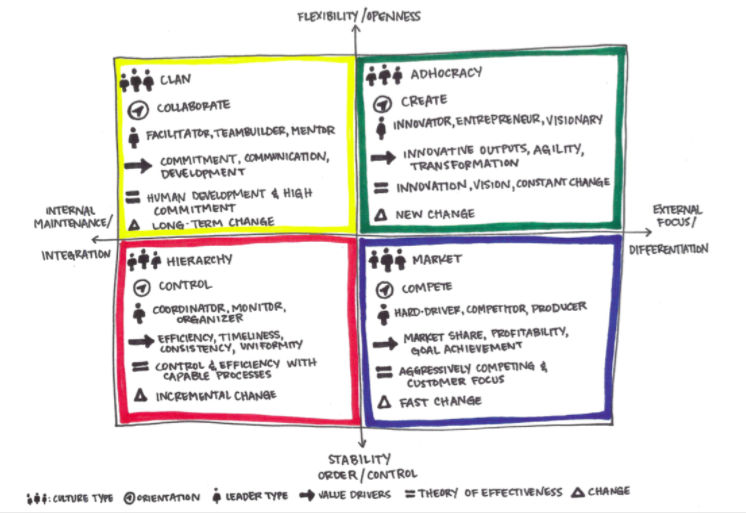I’ll admit it: I’m a sucker for personality tests. Myers-Briggs, the Enneagram, that one Buzzfeed quiz that tells you what classic ‘90s cartoon character you are — I’ve done ‘em all. And the reason I get so much satisfaction out of these tests is no secret. Classification and categorization are a part of human nature, as is a desire to “find one’s self.” So when I come across a simple tool that can supposedly tell me who I really am, my response is, “Sign me up!”
It’s not that easy, though, right? We know that. The human personality is a complicated, changing and contradictory thing — there’s far too much inside each of us for any single label to accurately represent. As Walt Whitman wrote:
Do I contradict myself?
Very well then I contradict myself;
(I am large, I contain multitudes.)
So — are tools like these even useful at all? If you keep in mind their inherent limits, then I’d still argue yes. At Torrent, we use two particular assessments/frameworks to help us understand our strengths, both as individuals and as a company. In my time here so far, I’ve personally felt how these frameworks help us better communicate, collaborate and relate to one another.
Here’s a bit about each.
The Competing Values Framework
The Competing Values Framework was developed by researchers at the University of Michigan. As one of those researchers (Kim Cameron) explains, “Every leader in every organization faces competing values in the pursuit of excellence… These competing approaches are often associated with closely-held values of what is best or right in achieving success.” Cameron and his colleagues focused their research on organizational and leadership success and used their findings to develop a framework:
 Torrent's adaptation of the Competing Values Framework
Torrent's adaptation of the Competing Values Framework
The four quadrants that form the Competing Values Framework “represent opposite or competing assumptions present in most organizations.” These assumptions reflect organizational factors like culture, direction and change. There are no “right” or “wrong” quadrants, no “good” or “bad” — just different ways of approaching success:
- Yellow = High flexibility and integration. Collaboration.
- Green = High flexibility and differentiation. Creativity.
- Blue = High stability and differentiation. Competitiveness.
- Red = High stability and integration. Control and hierarchy.
While Cameron and his colleagues developed this framework for organizations, we use it in a more person-centered way. Torrent Guides complete a survey exercise to discover how strongly they identify with each quadrant or color. Personally, I’m very high yellow, low red, with mid-range scores for green and blue. This makes sense to me: collaboration and development are very important to me, and I’m committed to long-term change. On the other hand, I’m not big on control.
The Competing Values Framework offers a commonly understood way to express to my coworkers how I see my myself and my work. For instance, a high-blue colleague might assume I’m just moving slow on a particular task. However, by consulting the framework, they can see that my approach to change isn’t like theirs — I often prioritize stakeholder buy-in over pure efficiency. This understanding can help eliminate tension and make for more effective teamwork. As our People Development & Culture Manager put it to me, it helps us assume positive intent.
CliftonStrengths
The CliftonStrengths assessment — formerly known as Clifton StrengthsFinder — helps individuals uncover their talents. After taking a brief quiz, participants receive a ranked list of 34 different strengths (also called “themes and ideas for action”). For example, my top 5 are:
- Learner: I love to learn.
- Intellection: I like to think.
- Achiever: I have a constant need for achievement.
- Responsibility: I take psychological ownership of anything I commit to.
- Developer: I see the potential in others.
Again, these strengths square with how I see myself (and many of my colleagues have said the same of their personal top 5). But it’s the concrete definition of my strengths that helps me see where I add value. For instance, I’ve always known that I love learning, but focusing on some of the common attributes of this particular strength made me realize that being a learner makes me a more adept blogger.
CliftonStrengths also help me get to know others around me. Because we post every Torrent Guide’s top 5 strengths in our company directory, I can always see some key areas where my coworkers excel. This makes it easier to effectively collaborate, too: We can divide tasks in ways that play to our strengths.
Of course, to get the most value out of knowing your strengths, you have to understand them. That’s why every new employee at Torrent receives a copy of StrengthsFinder 2.0, a book that explains each strength in more detail. We also highlight individual strengths during daily standup meetings, noting which employees have that particular strength in their top 5.
Keys to Implementation
The most important thing to remember when implementing frameworks like these in your organization is what I mentioned in the intro: People are too complicated to be defined by a label. You can’t predict where or how someone will succeed based on the results of a simple survey or quiz, nor can you know how particular strengths will express themselves. Instead, use the Competing Values Framework and CliftonStrengths assessment to help your team members better understand where they fit — where they’d add value and find the most happiness.
The other crucial thing to emphasize is that the results of these frameworks should never be used to make strategic decisions against each other. If I know your strengths, I can probably guess your weaknesses, but to exploit them would create a toxic work culture.
If you’ve got questions about adopting one or both of these frameworks, please get in touch. We’re happy to discuss our experience.



